Seshu Tirupathi
Pre-Hoc Predictions in AutoML: Leveraging LLMs to Enhance Model Selection and Benchmarking for Tabular datasets
Oct 02, 2025Abstract:The field of AutoML has made remarkable progress in post-hoc model selection, with libraries capable of automatically identifying the most performing models for a given dataset. Nevertheless, these methods often rely on exhaustive hyperparameter searches, where methods automatically train and test different types of models on the target dataset. Contrastingly, pre-hoc prediction emerges as a promising alternative, capable of bypassing exhaustive search through intelligent pre-selection of models. Despite its potential, pre-hoc prediction remains under-explored in the literature. This paper explores the intersection of AutoML and pre-hoc model selection by leveraging traditional models and Large Language Model (LLM) agents to reduce the search space of AutoML libraries. By relying on dataset descriptions and statistical information, we reduce the AutoML search space. Our methodology is applied to the AWS AutoGluon portfolio dataset, a state-of-the-art AutoML benchmark containing 175 tabular classification datasets available on OpenML. The proposed approach offers a shift in AutoML workflows, significantly reducing computational overhead, while still selecting the best model for the given dataset.
Usage Governance Advisor: from Intent to AI Governance
Dec 02, 2024
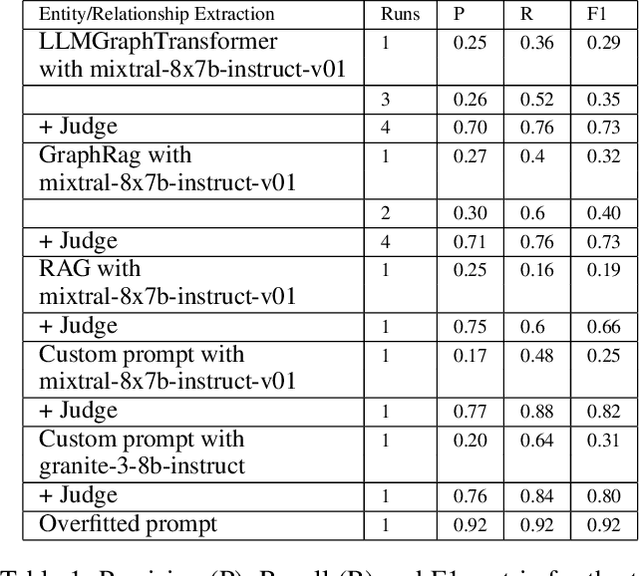
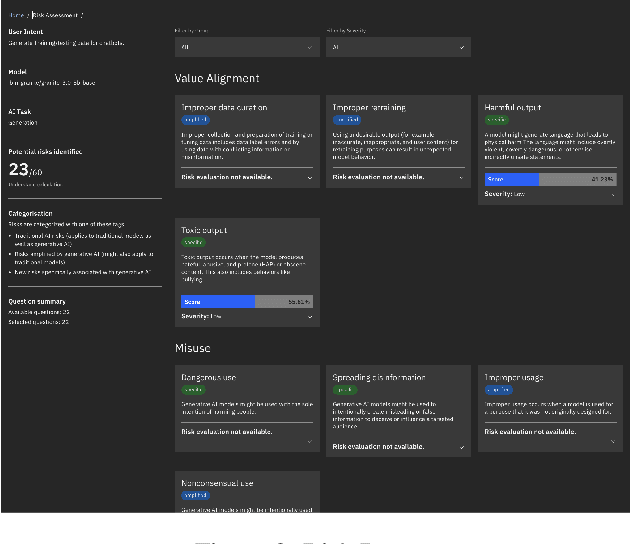

Abstract:Evaluating the safety of AI Systems is a pressing concern for organizations deploying them. In addition to the societal damage done by the lack of fairness of those systems, deployers are concerned about the legal repercussions and the reputational damage incurred by the use of models that are unsafe. Safety covers both what a model does; e.g., can it be used to reveal personal information from its training set, and how a model was built; e.g., was it only trained on licensed data sets. Determining the safety of an AI system requires gathering information from a wide set of heterogeneous sources including safety benchmarks and technical documentation for the set of models used in that system. In addition, responsible use is encouraged through mechanisms that advise and help the user to take mitigating actions where safety risks are detected. We present Usage Governance Advisor which creates semi-structured governance information, identifies and prioritizes risks according to the intended use case, recommends appropriate benchmarks and risk assessments and importantly proposes mitigation strategies and actions.
Domain Adaptation for Time series Transformers using One-step fine-tuning
Jan 12, 2024Abstract:The recent breakthrough of Transformers in deep learning has drawn significant attention of the time series community due to their ability to capture long-range dependencies. However, like other deep learning models, Transformers face limitations in time series prediction, including insufficient temporal understanding, generalization challenges, and data shift issues for the domains with limited data. Additionally, addressing the issue of catastrophic forgetting, where models forget previously learned information when exposed to new data, is another critical aspect that requires attention in enhancing the robustness of Transformers for time series tasks. To address these limitations, in this paper, we pre-train the time series Transformer model on a source domain with sufficient data and fine-tune it on the target domain with limited data. We introduce the \emph{One-step fine-tuning} approach, adding some percentage of source domain data to the target domains, providing the model with diverse time series instances. We then fine-tune the pre-trained model using a gradual unfreezing technique. This helps enhance the model's performance in time series prediction for domains with limited data. Extensive experimental results on two real-world datasets show that our approach improves over the state-of-the-art baselines by 4.35% and 11.54% for indoor temperature and wind power prediction, respectively.
Knowledge- and Data-driven Services for Energy Systems using Graph Neural Networks
Mar 12, 2021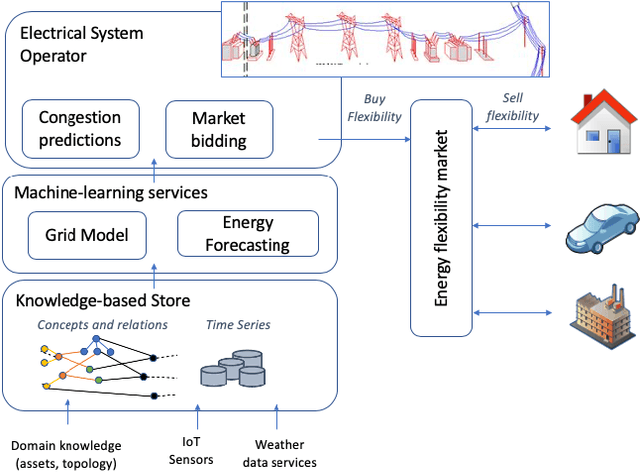
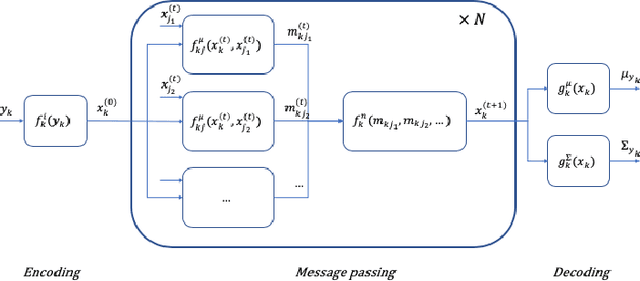
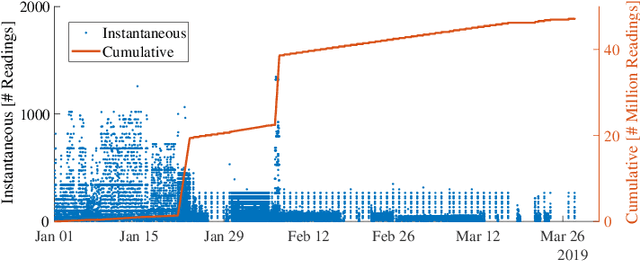
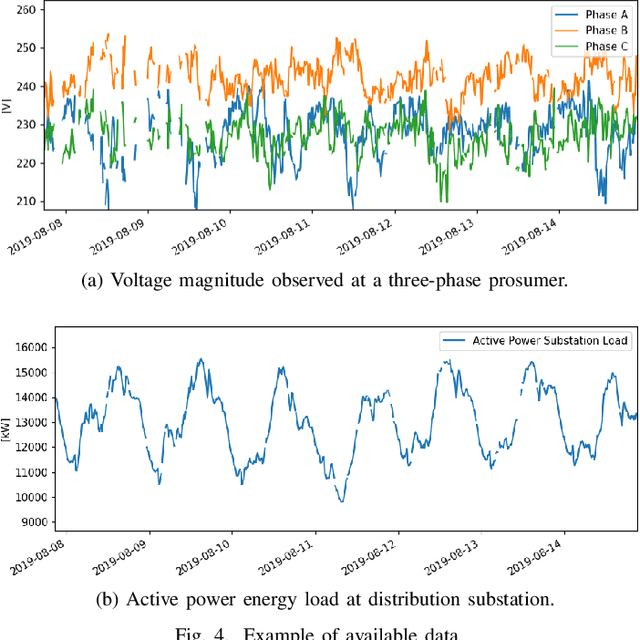
Abstract:The transition away from carbon-based energy sources poses several challenges for the operation of electricity distribution systems. Increasing shares of distributed energy resources (e.g. renewable energy generators, electric vehicles) and internet-connected sensing and control devices (e.g. smart heating and cooling) require new tools to support accurate, datadriven decision making. Modelling the effect of such growing complexity in the electrical grid is possible in principle using state-of-the-art power-power flow models. In practice, the detailed information needed for these physical simulations may be unknown or prohibitively expensive to obtain. Hence, datadriven approaches to power systems modelling, including feedforward neural networks and auto-encoders, have been studied to leverage the increasing availability of sensor data, but have seen limited practical adoption due to lack of transparency and inefficiencies on large-scale problems. Our work addresses this gap by proposing a data- and knowledge-driven probabilistic graphical model for energy systems based on the framework of graph neural networks (GNNs). The model can explicitly factor in domain knowledge, in the form of grid topology or physics constraints, thus resulting in sparser architectures and much smaller parameters dimensionality when compared with traditional machine-learning models with similar accuracy. Results obtained from a real-world smart-grid demonstration project show how the GNN was used to inform grid congestion predictions and market bidding services for a distribution system operator participating in an energy flexibility market.
Scalable Deployment of AI Time-series Models for IoT
Mar 24, 2020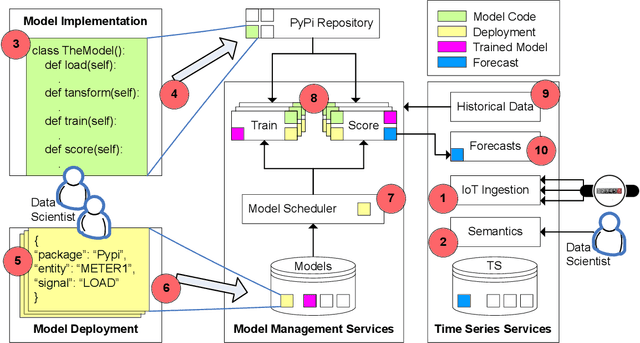
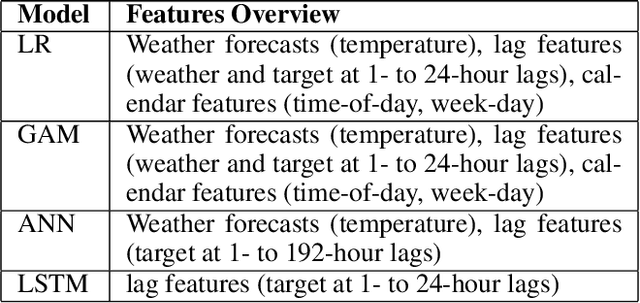
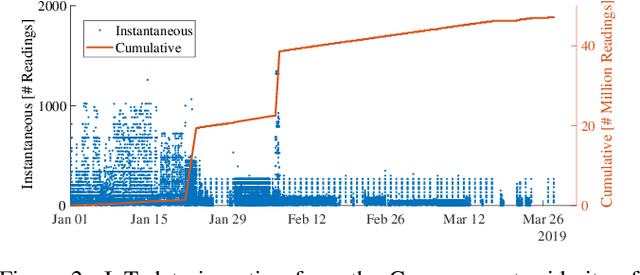

Abstract:IBM Research Castor, a cloud-native system for managing and deploying large numbers of AI time-series models in IoT applications, is described. Modelling code templates, in Python and R, following a typical machine-learning workflow are supported. A knowledge-based approach to managing model and time-series data allows the use of general semantic concepts for expressing feature engineering tasks. Model templates can be programmatically deployed against specific instances of semantic concepts, thus supporting model reuse and automated replication as the IoT application grows. Deployed models are automatically executed in parallel leveraging a serverless cloud computing framework. The complete history of trained model versions and rolling-horizon predictions is persisted, thus enabling full model lineage and traceability. Results from deployments in real-world smart-grid live forecasting applications are reported. Scalability of executing up to tens of thousands of AI modelling tasks is also evaluated.
Power Systems Data Fusion based on Belief Propagation
May 24, 2017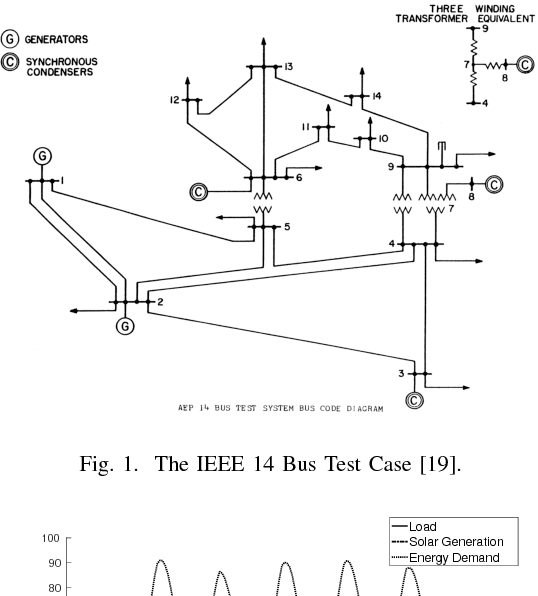
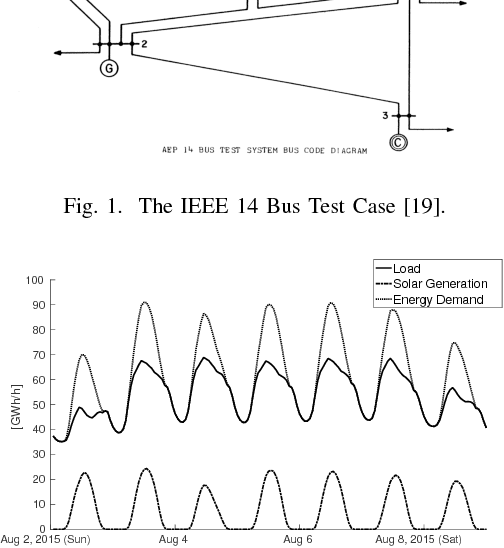
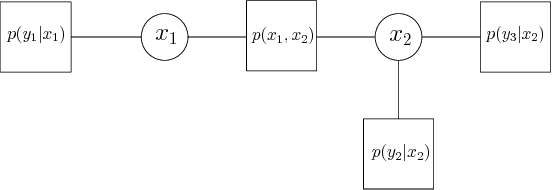
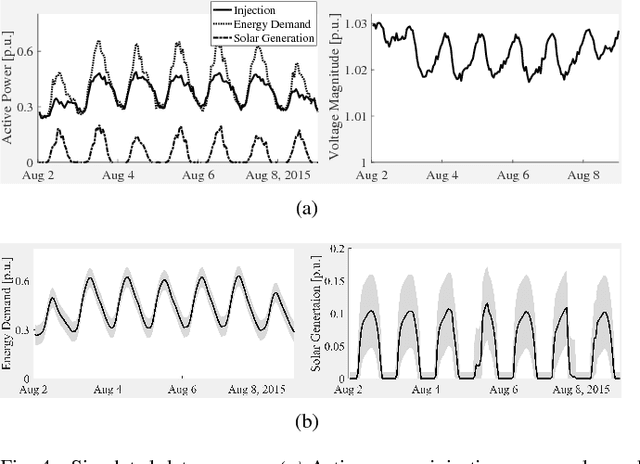
Abstract:The increasing complexity of the power grid, due to higher penetration of distributed resources and the growing availability of interconnected, distributed metering devices re- quires novel tools for providing a unified and consistent view of the system. A computational framework for power systems data fusion, based on probabilistic graphical models, capable of combining heterogeneous data sources with classical state estimation nodes and other customised computational nodes, is proposed. The framework allows flexible extension of the notion of grid state beyond the view of flows and injection in bus-branch models, and an efficient, naturally distributed inference algorithm can be derived. An application of the data fusion model to the quantification of distributed solar energy is proposed through numerical examples based on semi-synthetic simulations of the standard IEEE 14-bus test case.
 Add to Chrome
Add to Chrome Add to Firefox
Add to Firefox Add to Edge
Add to Edge